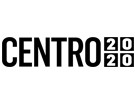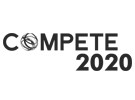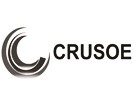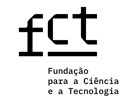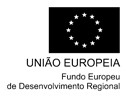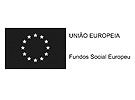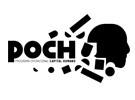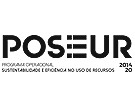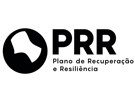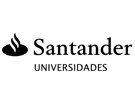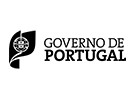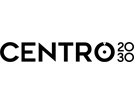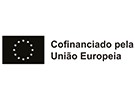



Publication in the Diário da República: Despacho nº 9183/2020 - 25/09/2020
6 ECTS; 2º Ano, 1º Semestre, 30,0 T + 16,0 PL + 14,0 TP , Cód. 300112.
Lecturer
- Marco António Mourão Cartaxo (1)(2)
- Manuel Alberto Nogueira Henriques Rosa (2)
(1) Docente Responsável
(2) Docente que lecciona
Prerequisites
Not applicable.
Objectives
An overview of some environmental issues of great relevance. Provide the knowledge required to debate these issues.
Students must be able to apply concepts and use different Environmental Engineering tools.
Students should also be able to identify key monitoring parameters and describe the major treatment technologies available, namely in relation to: atmospheric pollution and gaseous emissions; water pollution and conventional treatment systems; solid waste management systems and treatment of municipal solid waste; unconventional treatment technologies in soil remediation and water treatment; bioremediation.
Program
Theoretical component
1. Brief introduction to Environmental Engineering
1.1. Fundamental concepts: pollution; sustainability; Life Cycle Assessment.
1.2. Principles of Sustainable Development and the UN Sustainable Development Goals.
1.3. Environmental Risk Assessment.
2. Water pollution
2.1. Types of Effluents: Industrial Effluents, Domestic Effluents, and Agricultural Effluents.
2.2. Sources of Water Pollution: Point Source and Diffuse Source; Natural and Anthropogenic Sources.
2.3. Effects of Water Pollution on Aquatic Ecosystems and Humans.
2.4. Legal Aspects and Conventional Treatment Systems: National and European Legislation; Emission Limit Values and Legal Standards; Monitoring Parameters.
2.5. Conventional Treatment Systems: Stabilization Ponds; Biological Filters; Coagulation/Flocculation Processes.
2.6. Groundwater Pollution: Pollution Characteristics; Typical Pollutants; Monitoring and Remediation.
2.7. Ocean Pollution: Characteristics of Ocean Pollution; Main Pollutants; Sources of Pollution; Effects of Pollution on the Marine Ecosystem.
2.8. Drinking Water Treatment: Chlorination; Filtration; UV Treatment.
3. Soil pollution and solid waste
3.1. Introduction to soil pollution: definition and basic concepts.
3.2. Sources and types of soil pollutants: organic pollutants; inorganic pollutants; heavy metals.
3.3. Effects of soil pollution on human health and biodiversity.
3.4. Soil pollution monitoring methods: soil sampling; in-situ sensors.
3.5. Solid waste management systems: municipal waste management; collection and transportation; recycling.
3.6. Landfills and biogas production: landfills; biogas production; anaerobic digestion systems.
3.7. Conventional solid waste treatment technologies: composting; co-incineration; anaerobic digestion.
3.8. Emerging energy recovery technologies: gasification and pyrolysis. energy recovery from waste.
4. Air pollution
4.1. Composition of the atmosphere; importance of gases in the composition of the atmosphere.
4.2. Main air pollutants: nitrogen oxides, sulfur oxides, and particulate matter; sources; formation and reactions; effects.
4.3. Effects of air pollution: effects on the climate; effects on human health.
4.4. Energy production and gaseous emissions: emissions associated with different energy sources (conventional and renewable); environmental consequences (greenhouse effect, global warming, and climate change).
4.5. Air contaminants and treatments: air pollutant treatment systems; environmental legislation and international agreements.
5. Unconventional Treatment Technologies
5.1. Soil remediation: physical soil remediation processes; chemical soil remediation processes; electrokinetic soil remediation.
5.2. Groundwater remediation: common groundwater remediation methods; emerging groundwater technologies (advanced oxidation; nanomaterial adsorption).
5.3. Advanced Oxidation Processes (AOPs) and Sustainable Environmental Technologies: definition and principles of AOPs (function, advantages, non-electrochemical AOPs and electrochemical AOPs; applications of AOPs in the treatment of wastewater and emerging pollutants); electrochemical reduction in water treatment.
5.4. Sustainable environmental technologies: clean technologies and cleaner production; Green Chemistry and eco-efficiency.
6. Bioremediation
6.1. Main pollutants.
6.1.1. Concept of pollution: air pollution; water pollution; soil pollution; historical need for ecotoxicology.
6.1.2. Contaminants: sources of ecotoxicants; properties of ecotoxicants; main classes of contaminants; general effects of a toxicant on ecosystems.
6.2. Biological remediation.
6.2.1. In-situ soil bioremediation technologies: intrinsic in-situ bioremediation or natural attenuation; planned in-situ bioremediation: biostimulation, bioaccumulation, bioventilation, phytoremediation (phytoextraction, phytostabilization, phytodegradation, phytovolatilization, rhizofiltration, rhizodegradation).
6.2.2. Ex-situ soil bioremediation technologies (in solid phase): composting; biopiling; landfarming; windrows.
6.2.3. Ex-situ soil bioremediation technologies (in slurry phase): bioreactors.
6.2.4. Wastewater bioremediation technologies: Natural systems; constructed wetlands (phytoremediation and adsorption on porous materials).
Practical component
1. Identification of organic pollutants in water bodies.
2. Study of the effectiveness of wastewater treatment methods.
3. Monitoring of heavy metals in industrial effluents.
4. Simulation of contaminant leaching from solid waste into soils.
5. Analysis of microplastics in urban soils.
6. Study of the remediation of soils contaminated with oil and hydrocarbon residues.
7. Measurement of suspended particles and pollutant gases in the air.
8. Electrokinetic remediation of contaminated soils.
9. Study of the effectiveness of wastewater treatment methods with Advanced Oxidation (UV/H2O2 and Fenton).
Evaluation Methodology
Classification:
A (Chapters 1, 2, 3, 4, and 5): Written test at the different official assessment periods (50%), written thematic work with oral presentation and interest and participation in class (25%), and reports on experimental work (25%). All practical work and related reports are mandatory.
B (Chapter 6): Written test.
Final grade = (0,8xA) + (0,2xB)
Minimum final grade for approval of 10 points.
Bibliography
- Baird, C. e Cann, M. (2012). Environmental chemistry. New York: W. H. Freeman
- Mihelcic, J. e Zimmerman , J. (2021). Environmental Engineering: Fundamentals, Sustainability, Design, 3rd Edition. United States of America: Wiley
- Sincero, A. e Sincero, G. (1996). Environmental engineering: a design approach. New Jersey: Prentice Hall
- Velázquez-Fernandez, J. e Muñiz-Hernández, S. (2014). Bioremediation: processes, challenges and future prospects. New York: Nova Publishers
Teaching Method
Lectures fosusing on the fundamental principles. Theoretical and practical classes involving probelm-solving, analysis of case studies and laboratory works covering the subjects taught.
Software used in class
Not applicable.

